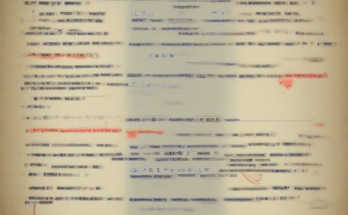The Bone Marrow Donation Journey: A Comprehensive Guide to the Process, Risks, and Recovery
Donating bone marrow is a profoundly selfless act, offering a lifeline to individuals battling life-threatening blood cancers and other diseases. Understanding the process, potential risks, and recovery period is crucial for prospective donors. This comprehensive guide delves into the details, empowering you to make an informed decision.
The Bone Marrow Donation Process: A Step-by-Step Guide
The journey of bone marrow donation involves several key steps, from initial registration to post-donation care. Let’s explore each stage in detail:
1. Registration and Typing: The First Step
The process begins with registering with a bone marrow registry. These registries maintain databases of potential donors, matching them with recipients based on tissue type compatibility. Registration usually involves a simple cheek swab to determine your Human Leukocyte Antigen (HLA) type, a genetic marker crucial for compatibility.
- Finding a Registry: Several reputable registries exist worldwide. Research and choose one that aligns with your geographic location and preferences.
- The HLA Typing Process: The cheek swab is a painless procedure, providing a sample for HLA typing. This is a vital step in identifying your compatibility with potential recipients.
- Entering the Database: Once typed, your information is added to the registry’s database, making you a potential match for individuals seeking a bone marrow transplant.
2. Matching and Contact: Finding a Recipient
If your HLA type matches a patient in need, the registry will contact you. This process can take anywhere from a few months to several years, depending on the rarity of your HLA type and the number of individuals awaiting transplants.
- Matching Criteria: A close match is essential for successful transplantation to minimize the risk of rejection. Multiple factors beyond HLA type are considered.
- Notification and Consent: You will receive detailed information about the recipient and the procedure. Participation is entirely voluntary, and you can withdraw at any stage.
- Medical Evaluation: Before proceeding, you will undergo a thorough medical evaluation to ensure you are healthy enough to donate.
3. Donation Methods: Two Primary Approaches
Bone marrow can be donated through two primary methods: peripheral blood stem cell (PBSC) donation and bone marrow aspiration.
- Peripheral Blood Stem Cell (PBSC) Donation: This is the more common method. You receive daily injections of filgrastim (a medication that stimulates the production of stem cells) for several days before the procedure. Stem cells are then collected through a process similar to blood donation.
- Bone Marrow Aspiration: This involves extracting bone marrow directly from the pelvic bone under general anesthesia. It is a more invasive procedure with a longer recovery time.
4. The Donation Procedure: A Detailed Overview
The actual donation process varies depending on the chosen method.
- PBSC Donation: This procedure is generally well-tolerated. Stem cells are collected through a machine that separates them from your blood, similar to apheresis. You are typically able to go home the same day.
- Bone Marrow Aspiration: This is performed under general anesthesia, so you will be asleep during the procedure. Multiple small needle insertions are made into the hip bones to collect the bone marrow. Hospital stay is usually required for a day or two.
5. Post-Donation Care and Recovery: The Healing Process
Recovery varies depending on the donation method.
- PBSC Donation Recovery: Most donors experience mild fatigue and soreness at the donation site. Recovery is usually quick, within a few days to a week.
- Bone Marrow Aspiration Recovery: This involves a longer recovery period, typically one to two weeks, with potential for more significant pain and discomfort at the donation site. Pain medication is often prescribed.
- Follow-up Care: Regular follow-up appointments are scheduled to monitor your health and ensure complete recovery.
Potential Risks and Complications Associated with Bone Marrow Donation
While generally safe, bone marrow donation carries potential risks and complications, although these are relatively rare.
- PBSC Donation Risks: These are generally minor and include temporary fatigue, soreness at the donation site, and low blood counts. Rarely, allergic reactions to filgrastim can occur.
- Bone Marrow Aspiration Risks: These are more significant than PBSC donation and include pain, bleeding, infection, nerve damage, and bone fractures, although these are uncommon.
- Rare Complications: Serious complications are rare but can include post-donation infections or prolonged recovery times.
Preparing for Bone Marrow Donation: A Holistic Approach
Preparing for bone marrow donation involves both physical and emotional aspects.
- Physical Preparation: Maintaining a healthy lifestyle, including a balanced diet and regular exercise, is essential. Discuss any medications you are taking with your doctor.
- Emotional Preparation: The process can be emotionally challenging. Connecting with support networks, such as family, friends, and the donor support groups offered by registries, is crucial.
- Inform Your Employer: Inform your employer about your donation and potential time off needed for recovery.
The Impact of Bone Marrow Donation: A Lifesaving Gift
The impact of bone marrow donation extends far beyond the physical act. It represents a profound act of generosity, offering a second chance at life to individuals facing serious illnesses. Many recipients describe the donor as their life-saver, emphasizing the profound emotional impact of this selfless act.
- Transforming Lives: Bone marrow donation can be life-saving for individuals with various life-threatening conditions, including leukemia, lymphoma, and aplastic anemia.
- The Emotional Connection: Some registries facilitate communication between donors and recipients after the transplantation, fostering a powerful emotional bond.
- Long-Term Impact: The recipient’s improved health and quality of life are a testament to the lasting impact of bone marrow donation.
Making an Informed Decision: Weighing the Pros and Cons
The decision to donate bone marrow is deeply personal and requires careful consideration of the process, risks, and rewards. Weighing the potential benefits and drawbacks is crucial for making an informed choice that aligns with your values and circumstances.
- Pros: The potential to save a life, a deep sense of accomplishment, and the opportunity to be part of a life-changing medical advancement.
- Cons: Potential risks and complications (though rare), requiring time off work and recovery period, and the emotional toll of the process.
Conclusion
Bone marrow donation is a remarkable act of altruism with the potential to save lives. This detailed guide provides essential information to help you understand the process, risks, and recovery. By making an informed decision, you can contribute to a life-saving cause and experience the profound satisfaction of giving back to the community.



